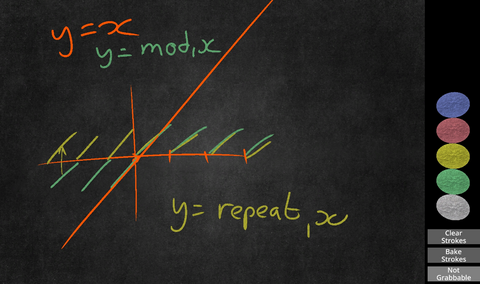Added a suggestion and link to the Div node page. |
not a stuh |
||
| Line 42: | Line 42: | ||
* Microsoft's Documentation on both the [https://learn.microsoft.com/en-us/dotnet/csharp/language-reference/operators/arithmetic-operators Arithmetic Operators] and the [https://learn.microsoft.com/en-us/office/vba/language/reference/user-interface-help/mod-operator Mod] reserved keyword. | * Microsoft's Documentation on both the [https://learn.microsoft.com/en-us/dotnet/csharp/language-reference/operators/arithmetic-operators Arithmetic Operators] and the [https://learn.microsoft.com/en-us/office/vba/language/reference/user-interface-help/mod-operator Mod] reserved keyword. | ||
[[Category:ProtoFlux:Operators]] | [[Category:ProtoFlux:Operators]] | ||
Latest revision as of 17:27, 10 February 2025
%
Operators
The ValueMod node takes in 2 inputs and returns the remainder value of a division operation. This node goes by names such as "Modulus", "Modulo", and "Mod". (TODO: Does truncation/rounding come into play when using this as an int value compared to float values?)
Inputs
A (Pseudo-Generic)
Takes in the value for division, this is your current amount to check against.
B (Pseudo-Generic)
Takes in a value for division, this is your range, or how much you can fill in with your value before it rolls over and starting from 0.
Outputs
* (Pseudo-Generic)
Returns the remainder value of a division operation.
Examples
-
A chart showing the difference between using Modulus and Repeat nodes (courtesy of GManAmby).
See Also
- Wikipedia's definition of the Modulo Operator in Computer Science.
- Microsoft's Documentation on both the Arithmetic Operators and the Mod reserved keyword.
